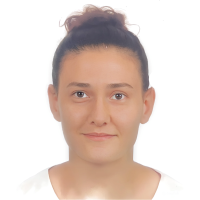Research Article
Aim & Scope
Journal of Sport and Performance Research (OMU-JSPR), published by Ondokuz Mayıs University, is a peer-reviewed journal that aims to publish qualified and original scientific articles that will contribute to the development of practitioners and theoreticians in sport sciences through articles accepted from Turkey and all over the world. It encourages new scientific research by sharing innovations, applications and current information in sports sciences with readers and researchers. The Journal of Sport and Performance Research aims to contribute to qualified scientific studies that have the competence to examine and solve the problems in sports sciences in the light of science in their publication life, which has continued uninterruptedly since 2010. Journal of Sport and Performance Research is a free journal that brings together qualified studies in sports sciences with readers through scientific processes.
Journal of Sport and Performance Research is published electronically 3 (three) times a year in April, August and December. The journal is written in English and Turkish. Articles submitted to the journal should not have been published before or sent to another journal for publication. The journal publishes research and review articles in all fields related to sports sciences. OMU-JSPR: It is located in the primary subject area of Science Sciences, created by ULAKBIM and scanned by TR DIZIN.
In this context, the following topics constitute the scope of the journal:
- Training
- Physical Education and Games
- Physical Education and Sport Pedagogy
- Exercise Physiology
- Physical Education, Sport and Physical Activity for Disabled People
- Physical Activity and Health
- Physical Fitness
- Kinanthropometry
- Motor Control
- Biomechanics in Sports Science
- Movement Education in Sport Science
- Sports Activities Management
- Sports Law
- History and Philosophy of Sport
- Sport and Nutrition
- Sports and Leisure Management
- Sports and Exercise Nutrition
- Sport and Recreation
Author Guidelines
Studies submitted to the Journal of Sports and Performance Researches (OMU-JSPR) should consider the following publication rules.
1. The Journal of Sports and Performance Researches (JSPR) publication language is Turkish and English.
2. The Journal of Sports and Performance Researches (JSPR) publishes original studies in physical education and sports sciences that have not been published in any publication organ.
3. The corresponding author should sign a form stating that the study sent to the journal for publication has not been published or sent for publication elsewhere and that they transfer all publication rights to OMU-JSPR and send it to the journal editorial office with a file attached to the study (Appendix: Publication Rights Transfer Form)
4. For the studies to be submitted to the Journal of Sports and Performance Research (OMU-JSPR), "TÜBİTAK ULAKBİM DERGİPARK national article submission, tracking and evaluation system" is used. For this reason, authors must register to the relevant system and obtain a username and password for one time only.
5. Each study that passes the formal control is sent to the appropriate referees and evaluated according to its scientific content. Manuscripts that do not comply with the journal's spelling rules are returned to the author without being taken into the evaluation process.
6. All manuscripts submitted to the journal are published after the editor's approval and at least two referees and, if deemed necessary, after the requested changes are made by the author(s). Suppose the author does not accept the proposed changes to the study. In that case, the journal's editorial board is authorised to apply to another referee or to return the study to the author.
7. In the studies decided to be published, no additions or deletions can be made except for minor spelling errors before publication.
8. After the manuscripts are submitted to the journal for publication, author names cannot be deleted, new names cannot be added, and author ranking cannot be changed without the written permission of all authors.
9. No royalties are paid to the authors whose works are published.
10. The right to republish the entire published article depends on the journal's permission.
11. The completed manuscripts are published based on the journal's submission date. However, this order may not be applied to some prioritised manuscripts to keep them current. The authority to decide this belongs to the editor.
12. Oral interviews and notifications of unpublished works (except Master's and Doctoral Theses) should not be used as a source.
13. The author/authors are responsible for the accuracy of the sources.
14. Submitted manuscripts will not be returned to their authors, whether published or not. In case of non-publication, the author/authors will be informed about this issue.
15. If the studies are accepted for publication, "Journal of Sport and Performance Research" (OMU-JSPR) owns all publication rights of the study.
16. The scientific, ethical, and legal responsibility for the published studies belongs to the author/authors. Ethics committee reports must be obtained for human and animal subjects.
Click on the link to access the writing rules as a document.
1. The first page (Authors' Colophon and the Turkish and English title of the study); the Turkish and English title of the study is written in 12 pt. in Times New Roman character, single-spaced, single-spaced, in capital letters, and immediately below it, the names and surnames, ORCID numbers, addresses, telephone numbers and e-mail addresses of the author/authors are listed in the order of their contribution to the manuscript. The phrase "Corresponding author" is added in quotation marks next to the author who will be responsible for correspondence (Appendix: Author information template).
2. As the second file (the text of the study is given as a whole starting from the title), The TURKISH TITLE should be written in capital letters Times New Roman character, 12 pt, bold, and no abbreviation should be used, the name-surname of the author/authors should not be given in this section (Appendix: Article template).
Should not be given in this section (Appendix: Article template).
The title "ABSTRACT" should be written in Times New Roman, 10 Punto, 1 line spacing. It should be a single paragraph, at most 250 words. The abstract should start with a one-sentence introduction stating why you need to do the study. The abstract should include an introduction, purpose, subjects or research group, data collection tools, procedure, analysis of data, brief findings, and a brief conclusion, but should not be given in headings.
"ENGLISH TITLE" (Turkish abstract writing rules apply).
Keywords: Alphabetical order, comma separated between words, minimum three and maximum five words. Times New Roman, 10 Punto, 1 line spacing
Article sections: The article text consists of the following sections: "Introduction", "Method", "Results", "Discussion", "Conclusion and Recommendations", and "References". These headings will be left-justified, capitalised, 12-point font and bold).
If deemed necessary, the "acknowledgements" section is written before the references.
3. Author copyright transfer form: The form signed by the corresponding author.
4. Ethics committee certificate. The ethics committee certificate obtained by the author should be uploaded to the system together with the article and the institution from which it was obtained; the number and date should be specified in the method section of the article.
5. The similarity rate must be at least 12%, excluding references (reports from Turnitin or iThenticate similarity programs must be uploaded to the system).
The study title should be in bold 12 Times New Roman characters with the first letter capitalised and centred.
2) ABSTRACT/ABSTRACT:
It should be written in Times New Roman, 10 Punto, 1 line spacing. It should be a single paragraph, at most 250 words. The abstract should start with a one-sentence introduction stating why you must do the study. The abstract should include an introduction, purpose, subjects or research group, data collection tools, procedure, analysis of data, brief findings, and a brief conclusion, but should not be given in headings.
For studies sent in English, the Turkish abstract should be added below the English abstract.
3) MAIN TEXT:
The subject of the study, the problem with its justifications and the theoretical or conceptual framework of the research should be presented, and an evaluation of the primary sources should be made. In the last paragraph of the introduction, the purpose and original value of the study should be stated. Definitions, abbreviations, assumptions, and limitations should be presented in this section along with their justifications.
The text of the article should be in Times New Roman 12 pt, the first line should be 1 cm from the inside, and the line spacing should be 1.5 pt. Page margins should be 2.5 cm on all sides (bottom, top, right, left). A 6nk space should be added between sections or after paragraphs.
Figures, graphs, photographs and charts to be included in the main text should be given and numbered where they are mentioned in the study. Figures, graphics, and photographs should be presented in JPG and TIFF format. The table number and title should be written above the tables. Tables can be written in 8, 9 or 10 font sizes according to the page layout. In articles written in Turkish, decimal notation should be indicated with a "comma" sign, and in studies sent in English, decimal notation should be indicated with a "dot" sign.
4) ACKNOWLEDGEMENTS:
Acknowledgements are not mandatory. However, the author/authors may write a few sentences of acknowledgement to people whose contribution to the research is not at the level of authorship.
It should be written at the end of the main text and before the References section.
5) REFERENCES:
The reference format is APA format. As much as possible, new sources that are directly related to the study should be included in the study. It is recommended that the number of references should not exceed 40.
When citing sources in the text, the surname of the author(s) and the date of the work are written in parentheses after the quoted statement and the parenthesis is closed. Example: If the cited text has a single author, it is shown as (Ağaoğlu, 2019). If the cited text has two authors, it is shown as (Atan & Küçük, 2009). If the cited text has more than two authors, it is shown as (Atan et al., 2020).
When citing, if more than one author has expressed the same idea, the author's work with the younger year is put first, and semicolons separate the authors (;). Example: Cited text (Atan, 2005; Ağaoğlu & Küçük, 2009; Erim et al., 2011).
If the source is stated at the beginning, the author's surname is written, and the citation year is indicated in parentheses. Example: Atan et al. (2020) should be in the form of the cited text.
References are listed alphabetically, not numbered.
CITATION OF SOURCE
References should be listed alphabetically; Times New Roman should be written in 10 font size; line spacing should be 1.0 cm, and six spaces should be added between references after the paragraph. The DOI number of the source, if any, should be indicated at the end of the bibliography.
The first letter of all words in the names of sources such as books, journals, edited books, congresses/symposiums, films, television programmes, documentaries or albums should be capitalised.
The list of references should be alphabetised and numbered according to the surname of the first author of each work.
In the References section, if there is more than one article by the same author, it is ordered according to the year of publication, starting from the oldest to the most recent.
If there is more than one publication of the same author published in the same year (or if the same group of authors are found in the same order), alphabetical order should be made according to the initials of the article names and a letter should be added next to each year.
In the References section, if the author's single-authored publications and publications with multiple authors are used, the single-authored publication should be placed at the beginning.
If the first author is the same and the second and third authors are different, the source whose name precedes the second author in alphabetical order should be placed at the beginning. If the names of the second authors are the same, the third authors should be listed according to the third authors.
To access the APA style;
https://apastyle.apa.org/style-grammar-guidelines/citations
Sample Reference Citation
Citation from the article:
Kibler, W.B., Press, J., & Sciascia, A. (2006). The role of core stability in athletic function. Sports Medicine, 36(3), 189-198. DOI: xxxxxxx.xxxxxx
If the source is taken from the paper:
Hazır, T., Kazancı, A., Açıkada, C. (1992). "Methodological problems in anthropometric measurements". 2nd National Sports Sciences Congress, Ankara.
If the source is taken from the thesis:
Küçük, H. (2018). The effect of aerobic and anaerobic capacity on serum irisin, leptin, ghrelin levels. Unpublished PhD Thesis, Ondokuz Mayıs University Institute of Health Sciences, Samsun.
Citation from the book:
Agur, A.M., & Dalley, A.F. (2009). Grant's Atlas of Anatomy. Lippincott Williams & Wilkins.
Citation from an edited book:
Plath, S. (2000). The Unabridged Journals of KV Kukil. New York, NY: Anchor.
Translated Book:
Willardson, J.M. (2018). Core Development. (1st ed.). (Ç Bulgan, MA Başar, Transl.). Istanbul: Istanbul Medical Bookstores.
Web Document, Web Page or Report:
Author, A.A., Author, B.B. (Year of Publication). Title of Document. Month.day.year, http://web.
Ethical Principles and Publication Policy
All stakeholders (publisher, editor, author, referee and reader) who ensure the realisation of scientific production must comply with ethical principles for the correct progress of science. In this context, the Journal of Sport and Performance Research adopts the COPE publication ethics (Committee on Publication Ethics) and open access policy.
When a Scientific Research and Publication Ethics violation is detected in an article submitted to the Journal of Sport and Performance Research, the institution where the author works is officially notified of this situation, and the article is rejected. Our journal has the right to request output files related to the analysis results from the authors according to the feedback given by the editor and referees.
Ethical Responsibilities of the Publisher
Ondokuz Mayıs University, the publisher of the Journal of Sport and Performance Research, is a non-profit public educational institution that pursues public interest. The publisher, one of the stakeholders involved in a scientific study, should also act within the scope of all these ethical principles.
The publisher must use its communication power without any individual interest and correctly guide its target audience.
It protects the ownership and copyright of every work published within its organisation and undertakes the task of archiving every published product.
People should not hesitate to contact the publisher when encountering an unethical situation.
Authors submitting publications to the Journal of Sport and Performance Research must comply with the following rules:
1. The submitted articles must be the original work of the author(s).
2. The submitted articles must not have been published before.
3. It is unethical to simultaneously submit an article to more than one journal for publication.
4. Any possible conflict of interest should be clearly stated.
5. The Journal of Sport and Performance Research should be informed about the data sources used in developing the article.
6. If any errors are found by the author(s) after the manuscript is submitted for publication, the author(s) should immediately notify the Editor(s) of the corrections made.
7. Ethics Committee Approval must be obtained for all studies involving human or animal subjects that require Ethics Committee Approval, and this approval must be stated and documented in the article.
Referees of the Journal of Sport and Performance Research should follow the following rules:
1. They should evaluate all manuscripts fairly, based on their content, without regard to the author's gender, race, ethnicity, religion, citizenship or political values.
2. Reviews should be objective and constructive, avoiding personal comments that are hostile or inflammatory, intimidating or condescending.
3. They guide to help improve the quality of the manuscript to be published and scrutinise the work rigorously.
4. They have the specialised competence required to make an accurate assessment and evaluate the manuscript within their allocated time.
5. If they observe a conflict of interest during the review process, they should notify the Editor.
6. Keep all information about the manuscript confidential.
7. They may not use the information obtained during the review process to their advantage or the advantage of others or other organisations or to disadvantage or discredit others.
8. They should inform the Editor if any information may lead to refusal to publish the manuscript.
The editors of the Journal of Sport and Performance Research should follow the following rules:
1. They should evaluate all manuscripts fairly, based on their content, without regard to the author's gender, race, ethnicity, religion, citizenship or political values.
2. Keep information about articles confidential.
3. If they observe any conflicts of interest regarding the manuscript, they should disclose them.
4. The Editorial Board is responsible for the decision to publish the article submitted for publication based on the referee evaluations, the editorial board policies of the journal, and taking legal measures against plagiarism, defamation and copyright infringement.
5. In case of a complaint of ethical violation, implement the necessary procedures by adhering to the policies and procedures of the journal. To allow the authors to respond to the complaint, regardless of who the work belongs to, and not to refrain from applying the necessary sanctions.
6. To only accept the incoming work if it is suitable for the purpose and scope of the journal.
Notifying the Editor of the Situation that Does Not Comply with Ethical Principles
In the Journal of Sport and Performance Research, editors or referees should be notified to spd@omu.edu.tr when they encounter unethical behaviour regarding authors or an unethical situation regarding an article in the review process, in early view, or even a published article.
Open Access Policy
Journal of Sport and Performance Research follows the Open Access policy to contribute to science.
No fee is requested from the author/authors for the studies published in the journal.
Price Policy
Journal of Sport and Performance Research follows the Open Access policy to contribute to science.
No fee is requested from the author/authors for the studies published in the journal.
Indexes
Journal Boards
Publication Owner
Scientific Publications Coordination Office

Head Editor

Section Editors: Exercise and Training Sciences

Section Editors: Physical Education and Sport Sciences


Section Editors: Recreational Studies

Section Editors: Sport Management Sciences

Language Editors (Turkish)
Language Editors (English)
Assistant Editor

Editorial Board
















Advisory Board













Secretariat






